Patient sleep patterns during home parenteral nutrition
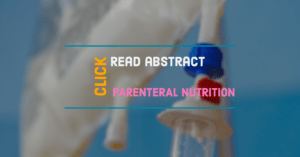
Patient sleep patterns during home parenteral nutrition Abstract: Background: Patients receiving home parenteral nutrition (HPN) are known to experience psychological distress and have profoundly disrupted sleep. The aim of this analysis was to examine the relationship between sleep patterns with depressive symptoms and HPN characteristics. Methods: The study was a secondary analysis of cross-sectional data […]
Home parenteral nutrition best practice examples – Full Text
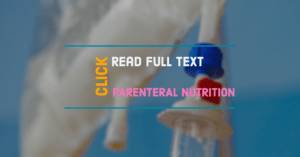
“This article is based on presentations and discussions held at the International Safety and Quality of PN Summit, providing insights into aspects of home PN (HPN) and examples of good HPN practice” Kumpf et al (2024).
Parenteral nutrition administration in NICU

“The goal of this paper is to review the practicalities, challenges, and conundrums of administering PN in the NICU” Smazal et al (2023).
Lipid emulsions in parenteral nutrition

“A short introduction to clinical nutrition with a focus on lipid emulsions is presented in this chapter” Brito-de la Fuente et al (2023).
Peripheral parenteral nutrition safety

“Peripheral parenteral nutrition (PPN) provides a suitable option for early nutrition provision in select patients; however, its routine use has been limited by safety and tolerability concerns, with high rates of phlebitis reported in previous studies” Inayat-Hussain et al (2023).
Parenteral nutrition solution stability and compatibility – Full Text

“This work is part of a larger research project concerned for compatibility of PNS with commonly used intravenous medication in paediatric and neonates” Farhan et al (2023).
Changing landscape of UK adult home parenteral support

“The United Kingdom (UK) nutrition database monitors the changing landscape of adult home parenteral nutrition support (HPS) to inform clinicians and policy makers of the need for this life saving treatment” Naghibi et al (2023).
Parenteral nutrition complications in children

“To determine the indications, metabolic and mechanical complications of parenteral nutrition in children” Ozturk et al (2023).
Home parenteral nutrition support and quality of life – Full Text

“Home parenteral support (HPS) is an essential but potentially burdensome treatment that can affect quality of life (QoL). The aims of this longitudinal study were to understand whether any changes in HPS over time were associated with QoL” Jones et al (2023).
Home parenteral nutrition for children – Full Text

“We share our experiences for the last two decades and identify the risk factors for complications and mortality. A retrospective study of HPN patients was conducted between January 2000 and February 2022” Chen et al (2023).
Indications and contraindications of parenteral nutrition – Full Text

“The indications and contraindications of parenteral nutrition (PN) are discussed in view of recent clinical findings” Berger and Pichard (2022).
Parenteral nutrition overview – Full Text

“PN should be provided via a central line because of its hypertonicity. However, peripheral PN (with lower nutrient content and larger volume) can be administered via an appropriate non-central line” Berlana (2022).
Home parenteral nutrition in patients with advanced cancer – Full Text

“The CVC type, administration of concomitant chemotherapy via a distinct CVC lumen separate from PN, venting gastrostomy and distance between the patient’s home and the IF center were not associated with CRBSI or mechanical CVC complications” Kopczynska et al (2022).
Intravenous nutrition among professional athletes – Full Text

“The authors regularly interact with professional team sport players in European and American leagues and their multidisciplinary support teams, and we are aware of players receiving regular intravenous nutrition (IVN) products” Lewis et al (2022).
Peripheral parenteral nutrition product development – Full Text

“This trial suggests that the newly developed formula (OPF-105) improves fat metabolism, maintains vitamin profiles, and may prevent body protein and fat breakdown and can be safely administered to healthy participants” Fukatsu et al (2022).
Home parenteral nutrition CLABSI management – Full Text

“CVC salvage can be achieved in most CLABSI cases but seems associated with a shorter CLABSI-free survival” Gompelman et al (2022).
Long-term home parenteral nutrition outcomes – Full Text

“Herein, we retrospectively analyse the long-term outcomes of a cohort of pediatric patients with CIF followed-up since our Pediatric Intestinal Failure Unit foundation, in 1989” Lezo et al (2022).
Nutritional management of short bowel syndrome

“Newer generation intravenous lipid emulsions can be effective in preventing and treating intestinal failure-associated liver disease” Premkumar et al (2022).
ASPEN paper – PN patient safe care transitions – Full Text

“The goal of this paper is to identify risk-prone processes in the transition of care for patients requiring parenteral nutrition (PN) between healthcare environments, including the hospital, home, skilled nursing facility, and long-term acute care hospital settings” Adams et al (2022).
Parenteral nutrition-associated liver disease
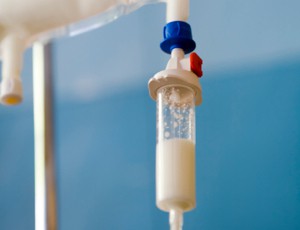
“Although lipid reduction strategies, as well as the use of multicomponent lipid emulsions and vitamin E, have shown promise, the cornerstone of preventing injury is the early establishment of EN” Wichman et al (2022).
Pediatric home parenteral nutrition in France

“This study aims to review the data involving children on HPN over a 6-years period in France to outline the global and continuous improvement in care” Goulet et al (2021).
Back pain associated with parenteral nutrition administration

“The patient’s back pain was ultimately felt to be an adverse reaction to the multivitamin component of the infusion based on an elimination trial of the PN components” Swartz et al (2021).
IV filters for parenteral nutrition
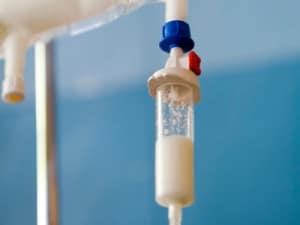
“This Position Paper aims to review past guidance regarding the filtration of PN, examine the clinical consequences of infusing particulate matter, discuss the challenges and issues related to filtration, and clarify the American Society for Parenteral and Enteral Nutrition (ASPEN) recommendations for the use of filters for PN administration” Worthington et al (2021).
Investigation of the cardiotoxic effects of parenteral nutrition
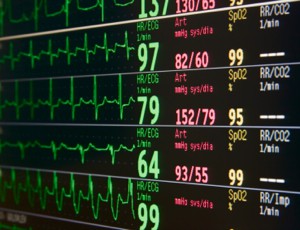
Parenteral nutrition (PN) is used for the intravenous delivery of nutrients to patients who cannot take food orally. However, it is not clear whether PN also negatively impacts cardiac tissue. The present empirical study investigated the cardiac effects of PN in rabbits” Gürünlüoğlu et al (2019). Abstract: INTRODUCTION: Parenteral nutrition (PN) is used for the […]
Monitoring of long-term parenteral nutrition in children
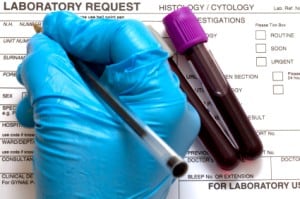
This narrative review summarizes the current knowledge and practices related to monitoring of children with IF. The authors also share their 20-year experience at the Royal Children’s Hospital in Melbourne Australia on this topic” Zemrani et al (2019). Abstract: Pediatric intestinal failure (IF) is a rare and complex condition associated with significant morbidity and mortality. […]
Outcomes of extended infusion of peripheral parental nutrition containing amino acids

In some Japanese hospitals, patients using infusion bags for parenteral nutrition containing amino acids have developed Bacillus cereus bloodstream infections” Shiota et al (2019). Abstract: In some Japanese hospitals, patients using infusion bags for parenteral nutrition containing amino acids have developed Bacillus cereus bloodstream infections. We considered that proliferation of contaminated B cereus in the […]
Physicochemical compatibility and stability of linezolid with parenteral nutrition
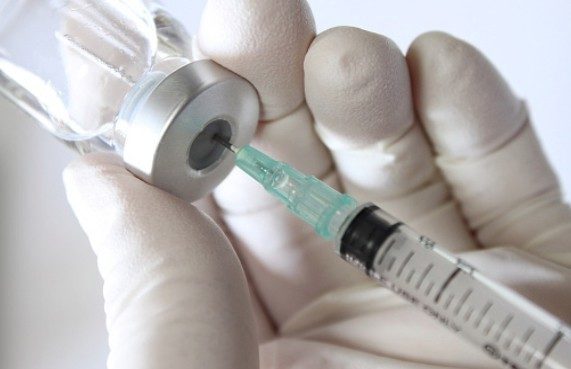
The addition of linezolid to TPN mixtures for patients treated for linezolid-sensitive infections may reduce the extent of vascular access handling, resulting in a diminished risk of unwanted catheter-related infections” Tomczak et al (2019). Abstract: Patients referred to intensive care units (ICU) require special care due to their life-threatening condition, diseases and, frequently, malnutrition. Critically […]
Influence of parenteral nutrition delivery techniques on growth of low birth weight newborns
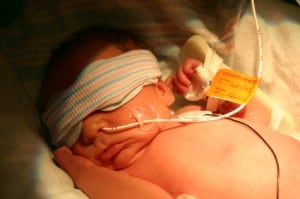
The aim of the conducted study was to evaluate the effect of two PN delivery techniques (PICC and PVC) on anthropometric parameters and neurodevelopment of VLBW newborns” Aldakauskienė et al (2019). Abstract: Background and Objectives: In very low birth weight (VLBW) newborns, parenteral nutrition (PN) is delivered via a peripheral venous catheter (PVC), a central […]
Nutritional and post-transplantation outcomes of enteral versus parenteral nutrition

This has traditionally been provided via parenteral nutrition (PN), but pediatric evidence is increasingly advocating enteral nutrition (EN) as a preferential alternative” Evans et al (2019). Abstract: BACKGROUND: Hematopoietic stem cell transplantation (HSCT) involves the administration of chemotherapy followed by the infusion of donor stem cells. After treatment, children can consequently experience nausea, vomiting, diarrhea, […]
Long-term study reviews infective vascular access outcomes associated with home parenteral nutrition

The aim of this study was to evaluate catheter-related complications of CVC in patients receiving HPN” Santacruz et al (2018). Abstract: OBJECTIVE: Home parenteral nutrition (HPN) has become a common therapy, with tunneled central venous catheters (CVCs) being the preferred route of administration. Peripherally inserted central catheters (PICCs) have been used increasingly, but whether they […]

